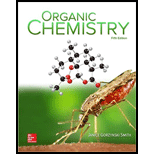
Concept explainers
Two other commonly used sulfonic acids are methanesulfonic acid
Want to see the full answer?
Check out a sample textbook solution
Chapter 19 Solutions
Package: Organic Chemistry with Connect 2-year Access Card
- Rank the following substances in order of increasing acidity: (a) (CH3)2CHOH, HC≡CH, (CF3)2CHOH, CH3OH (b) Phenol, p-methylphenol, p-[trifluoromethyl) phenol (c) Benzyl alcohol, phenol, p-hydroxybenzonic acidarrow_forwardIn each pair, select the stronger acid. (a) Pyruvic acid (pKa 2.49) or lactic acid (pKa 3.08) (b) Citric acid (pKa1 3.08) or phosphoric acid (pKa1 2.10)arrow_forwardThe following pKa values have been measured. Explain why a hydroxyl group in the para position decreases the acidity while a hydroxyl group in the meta position increases the acidity.arrow_forward
- Which base, CH3NH2 or (CH3)2NH, is the stronger base? Which conjugate acid, (CH3)2NH2+ or (CH3)2NH3+, is the stronger acid?arrow_forwardWhat is the relative trend in acidity and pKa of the two compounds? a. Structure I is the most acidic, and Structure I has the highest pKa. b. Structure I is the most acidic, and Structure I has the lowest pKa. c. Structure II is the most acidic, and Structure I has the highest pKa. d. Structure II is the most acidic, and Structure I has the lowest pKa.arrow_forwardThe ionization of p-nitrophenol is shown below (pKa= 7.0) a) At pH 7, what are the relative concentrations of ionized and un-ionized p-nitrophenol? b) If enough concentrated hydrochloric acid is added to a solution of p-nitrophenol to lower the pH from 7 to 5, what will happen to the relative concentrations of the ionized and un-ionized forms? c) A solution of p-nitrophenol at pH 8.3 was found to have an A400 of 0.550. What is the total concentration (in um) of p-nitrophenol (ionized plus un-ionized) in the solution? The molar extinction coefficient of p-nitrophenol is 19,500M-1cm-1 and the pKa is 7.arrow_forward
- 1. Rank the following species in order of increasing acidity. Explain your reasons for ordering them as you do. HF NH3 H2SO4 CH3OH CH3COOH H3O+ H2O2. Consider the following compounds that vary from nearly nonacidic to strongly acidic. Draw the conjugate bases of these compounds, and explain why the acidity increases so dramatically with substitution by nitro groups. CH4 CH3NO2 CH2(NO2)2 CH(NO2)3arrow_forwardWhat is the K a of an acid whose pK a is 8.60?arrow_forwardWhich is a stronger base?a. HS− or HO− b. CH3O− or CH3N-H c. CH3OH or CH3O− d. Cl− or Br−e. CH3COO− or CF3COO− f. CH3CHClCOO− or CH3CHBrCOO−arrow_forward
 Organic ChemistryChemistryISBN:9781305580350Author:William H. Brown, Brent L. Iverson, Eric Anslyn, Christopher S. FootePublisher:Cengage Learning
Organic ChemistryChemistryISBN:9781305580350Author:William H. Brown, Brent L. Iverson, Eric Anslyn, Christopher S. FootePublisher:Cengage Learning Chemistry by OpenStax (2015-05-04)ChemistryISBN:9781938168390Author:Klaus Theopold, Richard H Langley, Paul Flowers, William R. Robinson, Mark BlaserPublisher:OpenStax
Chemistry by OpenStax (2015-05-04)ChemistryISBN:9781938168390Author:Klaus Theopold, Richard H Langley, Paul Flowers, William R. Robinson, Mark BlaserPublisher:OpenStax


